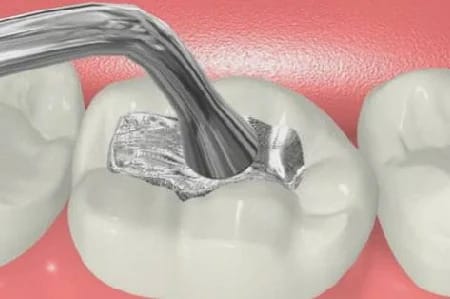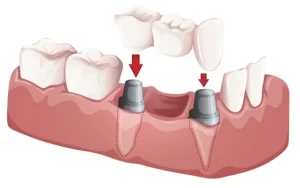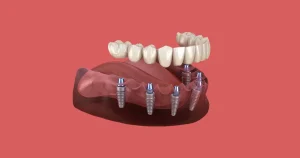When it comes to treating cavities or restoring damaged teeth, dental fillings are one of the most common and effective solutions. If you’re in Indianapolis and exploring dental services, knowing what fillings entail, the options available, and how they’re selected can help you make an informed decision.
What Are Dental Fillings?
Dental fillings are restorations that dentists place into cavities or damaged portions of teeth. Their goal is to restore the shape, function, and integrity of the tooth, preventing further decay or damage. Fillings can also be used for cosmetic reasons, such as improving the appearance of a tooth with chips or small defects.
Types of Filling Materials
There are several materials that can be used for fillings, each having its own set of advantages and disadvantages. The choice often depends on the location of the tooth, how visible the tooth is, the chewing forces it will endure, as well as patient preference.
-
Silver Amalgam
This is a traditional restorative material, made of a metal alloy (including silver). It’s known for its strength and durability, making it useful especially for molars and other teeth at the back of the mouth, where chewing forces are highest. -
Composite Resins / Ceramic & Plastic Compounds
These are tooth-colored materials designed to mimic the appearance of natural teeth. They are frequently preferred for front teeth where aesthetics matter more. Composite fillings can also be used in back teeth depending on how much decay there is and where the filling must bear chewing loads. -
Glass Ionomers and Resin Ionomers
These types are less common in heavily stressed biting surfaces, but have the advantage of releasing fluoride, which may help prevent further decay. They are sometimes used in areas where aesthetics are less critical or where a less durable material is acceptable.
Direct vs Indirect Fillings
Another important distinction is how the filling is placed and fabricated:
-
Direct Fillings are done in a single visit. The dentist will drill out the decayed portion, clean the cavity, then immediately place and shape the filling. Materials used for direct fillings include silver amalgam, composite, glass ionomer, or resin ionomer.
-
Indirect Fillings cover situations where more tooth structure has been damaged or removed — but not so much that the tooth needs a full crown. These include inlays, onlays, or sometimes custom ceramic/composite pieces. The process involves at least two visits: one to prepare the tooth and take an impression; another to place the lab-fabricated restoration.
What Affects Choice of Filling
Several factors go into deciding which filling type is best:
-
Material Properties – How strong it is, how long it will last, how it handles chewing stress, and how it looks.
-
Remaining Tooth Structure – If a lot of the tooth is intact, less extensive restorative work is needed. If an area is heavily decayed, an indirect filling or even more advanced restoration might be necessary.
-
Location in the Mouth – Front teeth demand better cosmetic results; back teeth require durability.
-
Chewing Load – Molars endure more force, so the material must be very durable.
-
Number and Length of Appointments – Direct fillings are more convenient; indirect types may require lab work and temporary restorations.
-
Cost Considerations – More durable, more aesthetic, or custom restorations tend to be more expensive.
What to Expect During the Procedure
If you decide to get a filling in Indianapolis (for instance, at a clinic like Olive Branch Dentists), here’s roughly how the process will go:
-
Your dentist will examine the tooth, often with x-rays if needed, to determine the extent of decay.
-
They’ll clean the tooth, remove the decayed portion, shape the cavity to receive the filling.
-
If using a direct filling material, the filling is placed, shaped, and then polished in the same visit.
-
If using an indirect restoration (inlay/onlay), a mold or impression will be taken, a temporary restoration placed, then in a follow-up visit the permanent piece is cemented in place.
Longevity and Maintenance
How long a filling lasts depends on material, how well it was placed, oral hygiene, and the stresses placed on the tooth. Silver amalgam fillings are very durable, often lasting many years. Composite or ceramic fillings may require more care, especially in high-stress areas. Regular dental checkups are important to monitor the integrity of your restorations; if a filling becomes worn, chipped, or leaks, it may need repair or replacement.
Why Choose a Local Indianapolis Dentist
If you’re considering fillings in Indianapolis, there are a few reasons to go with a well-established local dental clinic:
-
Personalized Consultation — A dentist can explain your options and help you pick what’s best for your particular tooth, lifestyle, and cost considerations.
-
State-of-the-Art Materials — Modern clinics often offer the full range of filling materials, both strong traditional ones and more aesthetic tooth-colored ones.
-
Experienced Care — Dentists familiar with local patients know what materials work best here and can manage your treatment with care and precision.
Conclusion
Dental fillings are a common, effective treatment for cavities and tooth damage. Whether you need something durable in the back of your mouth or something more aesthetic up front, there are many materials and approaches to choose from. Factors like material type, placement, chewing force, remaining tooth structure, and appointments needed will affect both performance and cost. If you’re in Indianapolis, make sure to consult with a dentist who can assess your specific needs, review your options, and provide a treatment plan that balances appearance, strength, comfort, and budget.







